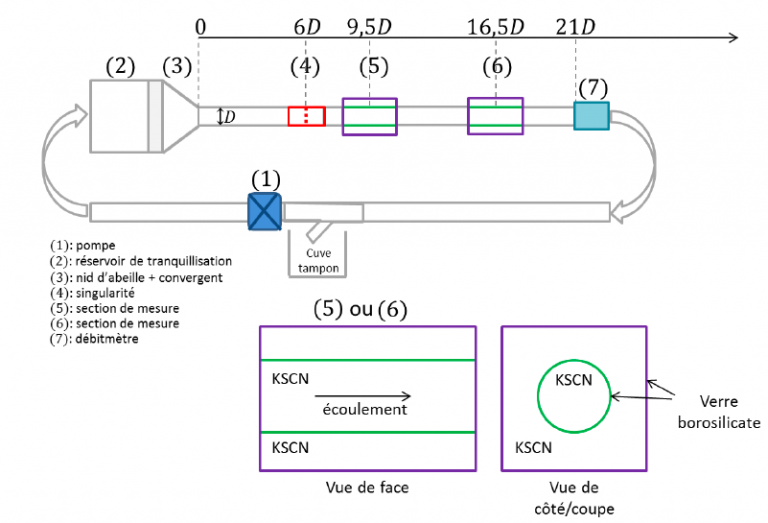Stability, transition and turbulence
Symmetry breaking downstream of a bend in a fully developed turbulent pipe-flow
Contacts: Julie Albagnac, Romain Mathis
In a nuclear power plant, controlling local flow rates contributes to the proper functioning of the plant. Several technologies allow the measurement of such flow rates, but all of which have a sensitivity to the velocity profile at the location of their implementation. Ideally, the measurement is made downstream of a long straight portion, where the established and developed turbulent flow is axisymmetric. This condition is far from being satisfied in industrial applications, due to the existence of several singularities along the circuits. It would therefore be useful to predict the behavior of the velocity profile at the location of the flow rate measurement in order to minimize errors due to singularities (bends for instance) located upstream. Here, the objective is to obtain experimental measurements of 3D velocity profiles downstream of a bend and a double-bend. Laser techniques such as LDV, stereoscopic PIV and time resolved 3D PTV will be used on a test bench with optical iso-index (see the set-up sketch).






